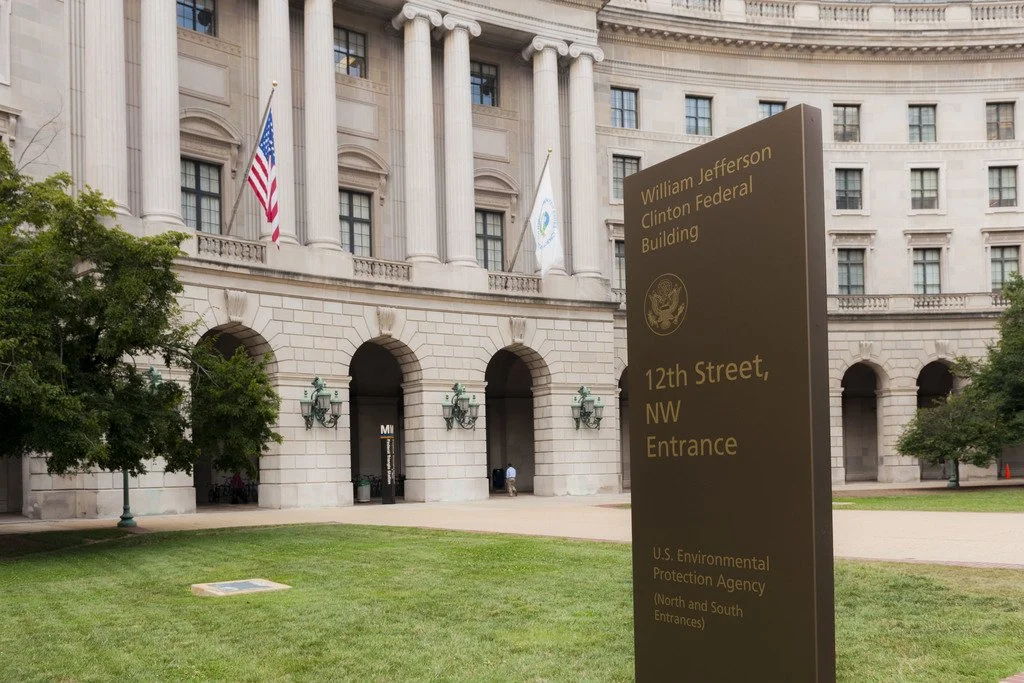On Nov. 4, 2022, the United States Environmental Protection Agency published a press release announcing “public engagement and input opportunities,” designed to gather feedback from the public on potential climate change and pollution reduction programs. These new programs are part of the Inflation Reduction Act, which was signed into law this past August, according to the press release. The EPA’s public engagement effort is made up of four elements: a “Request for Information,” expert input, a listening session and a webpage dedicated to the new programs, the press release stated. The RFI consists of six public dockets, each of which describes a potential program and has a section for comments.
EPA creates Office of Environmental Justice and External Civil Rights
On Saturday, Sept. 24, the Environmental Protection Agency launched a new office dedicated to environmental justice, MSNBC reported. Climate professionals believe this signifies a hopeful step toward a future of climate policy that is equitable and cognizant of the needs of all, an article from the EPA said.
Climate change will bring mosquito-borne diseases to new regions
After a season that saw climbing mosquito populations, mosquito presence in the United States is beginning to decline.
As the summer’s record-breaking heat and storms led to above-average rainfall, mosquitoes were able to proliferate successfully. Ideal conditions for mosquitoes feature rainfall that produces pools of water in which they lay their eggs, according to an Environmental Protection Agencies study published in 2021. Mosquitoes also prefer humid conditions, which will intensify as climate change worsens. According to a 2018 release from Climate Central, a climate reporting resource, for every 1 degree Fahrenheit of warming, the humidity will increase by about four percent.
College green spaces are an integral part of student wellness
The lush botanical gardens, lakes and hillocks stitching together the buildings at Mount Holyoke provide spaces for students to decompress, take part in age-old traditions and build new memories — all integral parts of one’s academic experience. Green spaces, like those mentioned above, are recreational areas, which the EPA website says aim to “enhance the beauty and environmental quality of neighborhoods.” The Enrollment Services branch of EAB, a technology and research oriented firm formerly named the Educational Advisory Board, shows that green spaces affect students’ college decisions.
NEPA and EPA Regulations Relaxed Under Trump Administration Have Environmental Implications
by Catelyn Fitzgerald ’23
Staff Writer
This summer saw the slashing of multiple environmental policies by the Trump administration in an effort to reduce time and costs associated with energy and infrastructure development in the United States. These changes met resistance from environmental groups and became the subject of political controversy. Two environmental regulations that have recently been rolled back are the National Environmental Policy Act and the Environmental Protection Agency’s rule on methane leaks in fossil fuel production.
NEPA is a piece of environmental legislation that requires all major federal actions to be assessed on their environmental, social and economic impact before implementation. “Major federal actions” cover a wide range of activities, from infrastructure projects such as building roads and bridges, to the implementation of federal policies and programs. Under NEPA, all such projects must draft environmental impact statements, explore ways to avoid negative environmental, economic and social impacts, consider long-term effects of the project and identify permanent resources needed to complete the project. These actions required by NEPA have often been criticized for causing unnecessary delays in the execution of projects, as they can be time- and resource-consuming.
The Trump administration’s new rule changes key definitions within NEPA to reduce its scope in an effort to increase the efficiency of federal projects. The new rule narrows the definition of “major federal actions” to exclude projects that require “minimal Federal funding or minimal Federal involvement.” The definition was previously given a broad interpretation, so the new rule releases many projects from needing to follow NEPA. The new rule also dictates that agencies are only responsible for effects that are “reasonably foreseeable and have a reasonably close causal relationship to the proposed action or alternatives,” meaning that agencies are not responsible for negative effects that would occur in the far future or the indirect effects of their projects.
Concerns regarding changes to NEPA are not only centered around the potential for negative environmental effects of projects to go unnoticed, but also around the speeding up of project planning that will reduce opportunities for communities to voice their opinions about the projects. As of Aug. 28, more than 20 states, including Massachusetts, have sued the Trump administration over changes to this policy.
Another environmental regulation that has been rolled back is a rule on methane leaks created by the Obama administration. The rule required fossil fuel companies to monitor and repair leaks of methane gas from oil and gas wells. The regulation would have required many oil and gas wells to be retrofitted with the proper technology for methane detection, which is both costly and time-consuming for fossil fuel companies. EPA estimates predict that the rollback will save these companies $100 million through 2030 and lead to 850,000 tons of methane being released into the atmosphere. Methane is a greenhouse gas that stays in the air for less time than other GHGs like CO2, but has 80 times the heat-trapping capability of CO2 during its first 20 years in the atmosphere. The gas is released by energy production plants, landfills and livestock.
The EPA has also reported that emissions from methane leaks have stabilized in recent years, meaning that the regulation may not necessarily have a significant impact on emissions, but these reports have been challenged by data collection within the scientific community. Recent findings are in agreement that atmospheric methane levels are higher than what was previously reported by the EPA. Discrepancies between EPA and independent data collection come from the EPA’s use of a mix of self-reported data from fossil fuel companies and on-site testing of methane leaks. The discovery of higher-than-expected methane levels means that policies aiming to curb emissions of the gas are more important than ever in slowing the onset of climate change.
Major fossil fuel companies have decided to continue following the regulation in order to avoid damaging their public image and aid in their promotion of natural gas as a “green” alternative to oil. If natural gas were to be associated with high amounts of methane emissions, it would undermine companies’ efforts to promote it.
The methane rule was part of a set of three regulations created by the Obama administration in an attempt to slow climate change. The others targeted CO2 emissions from cars and coal burning and have previously been rolled back by the Trump administration.
Weekly Climate News
Updates for September 10th
A record-setting heat wave swept through Southern California reaching a high of 121 F. The National Weather Service issued an excessive heat warning on Sunday, Sept. 6 for areas in Los Angeles, Ventura, Santa Barbara and San Luis Obispo counties.
California is grappling with an unprecedented wildfire season made worse by the historic heatwave. Over the Labor Day weekend, about 200 hikers in the Sierra Nevada National Forest trapped by the spreading flames had to be airlifted out by helicopters.
The heatwave and wildfires in the West, a massive derecho in the Midwest and the record-breaking 2020 hurricane season illustrate an extreme climate future. Read about the connection between these weather events and climate change here.
The European Environment Agency confirmed on Tuesday, Sept. 8 that environmental factors such as air pollution and heatwaves worsened by climate change contribute to around 13 percent of all deaths in Europe.
Ministers from 11 African countries met virtually on Monday, Sept. 7 to discuss progress on implementing the Great Green Wall, an initiative to develop a 15-kilometer-wide and 8,000-kilometer-long vegetation strip across Africa said to be integral in coronavirus recovery.
Oil refineries in the Louisiana petrochemical industry have been impacted by recent hurricanes, dumping harmful substances into the environment and disproportionately impacting communities of color.
EPA relaxes standards that limit toxic waste and regulate wastewater from coal-fired power plants. Environmental groups claim this makes rivers and streams more vulnerable to contamination by corrosive pollutants like lead, selenium and arsenic.
Communities permanently affected by environmental damage or economic disinvestment are known as “sacrifice zones.” Read this article about how these areas are currently on the front lines of both climate change and the global pandemic.
Read about these organizations which are helping the youth of color enjoy the outdoors in the middle of the global pandemic.
In Ottawa, Canada, farming techniques that reduce greenhouse gas emissions are being developed.
Effects of a government shut- down on the FDA and the EPA
BY THEA BURKE ’20
The U.S. government shutdown had many clear implications for various federal departments, employees and policies. Even though the shutdown may have posed a potentially insignificant risk to public health, it is important to understand which agencies do not function at full capacity when the government is closed.





